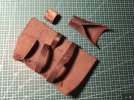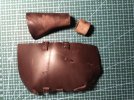Alex.Y.
Gold Member
- Joined
- Jan 11, 2021
- Messages
- 1,421
I never thought of that! Might be the case.or it was cut from a curved piece of bone and kinda has memory
Initially I checked the slabs, of course I did, and they were absolutely fine.
Well, I don't have a workshop of any kind, just some tools in my apartment, so I can't really use something as a grinder for many reasons like space, noise, dust etc. Of course it could have been easier that way and with some practice too, but I have what I have and try to get the best of it. Sandpaper on a flat surface is an interesting idea though, thanks!
Last edited:





